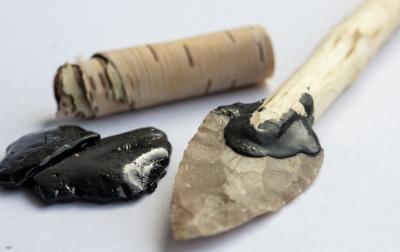Neanderthal glue was a bigger deal than we thought
Ars Technica » Scientific Method 2019-10-22

This replica shows how Neanderthals might have used birch tar to haft a projectile point. (credit: Paul R. B. Kozowyk)
Fifty-thousand years ago, a Neanderthal living in Northwestern Europe put sticky birch tar on the back side of a sharp flint flake to make the tool easier to grip. Eventually, that tool washed down the Rhine or Meuse Rivers and out into the North Sea. In the 21st century, dredging ships scooped it up along with tons of sand, other stone tools, and fossilized bones, then dumped the whole pile on Zandmotor Beach in the Netherlands.
Despite all of that, the birch tar still clung to the flake, and it provides evidence that Neanderthals used a complex set of technology to make elaborate tools.
Living on the edge
Making birch tar at all is a fairly complex process. It takes multiple steps, lots of planning, and detailed knowledge of the materials and the process. So the fact that archaeologists have found a handful of tools hafted using birch tar tells us that Neanderthals were (pardon the pun) pretty sharp.